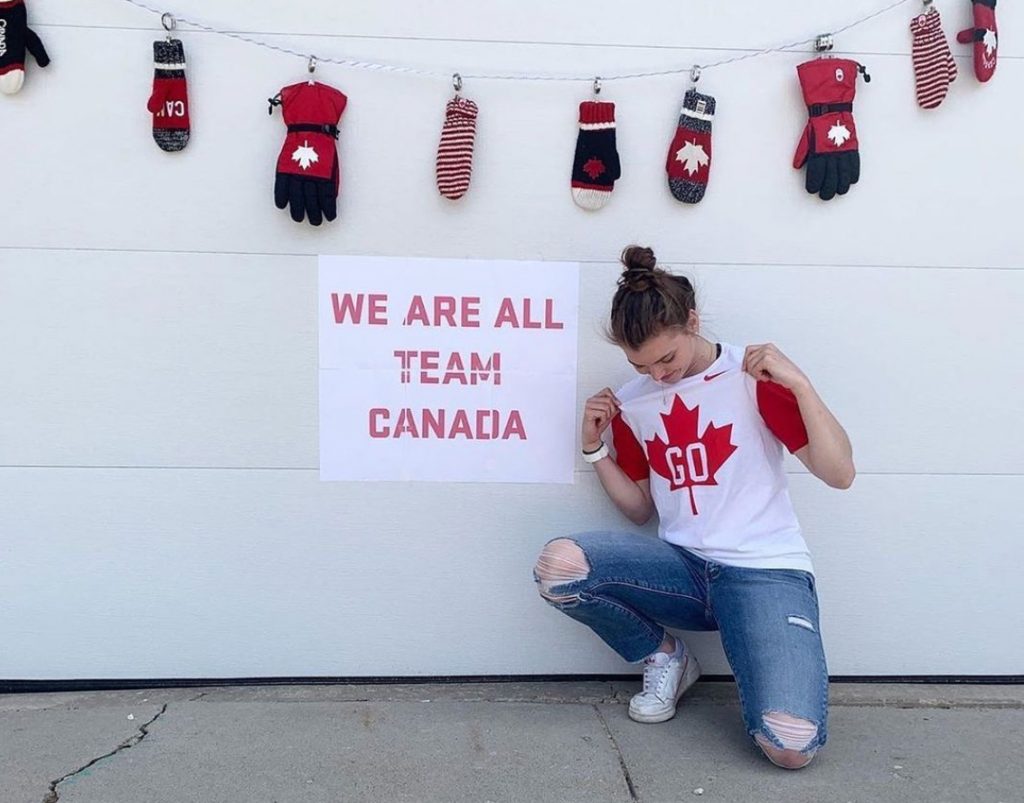
How the Canadian Olympic Committee engaged fans with its We Are All Team Canada campaign
By Wendy Helfenbaum
When the 2020 Tokyo Olympic Games were postponed due to the pandemic, four years’ worth of marketing, sponsorship and fan engagement campaigns suddenly had to be re-imagined.
“We were on the path to content packed with live events and athlete journey stories, which all came to a grinding halt,” says Jacquie Ryan, chief brand and commercial officer for the Canadian Olympic Committee (COC).
“Team Canada athletes felt they had a really important role to play: We were facing this as a country, and there was such a need to come together, so we very quickly pivoted to launch the We Are All Team Canada campaign, a rallying cry for Canadians to become one unified Team Canada.”
Even with no Games, the need for Olympic spirit among fans propelled Ryan’s team to work across their partnership network to support Canadians and frontline workers.
“Canadians hung signs in their windows saying, ‘Stay at home, We Are All Team Canada,’ to help reduce the spread of COVID-19,” says Ryan. “The campaign reminded the country what it means to be Olympic, and it was widely embraced.”
AUTHENTICITY COUNTS
“Fans expect engagement and content to come from a place of authenticity,” explains Ryan. “We put our marketing campaign and objectives on hold to focus on leveraging Team Canada athlete voices to help stop the spread, and because this was inspiring and highly relevant to Canadians, it drove tremendous results. We’ve learned how to be resilient, how to pivot, and how to lean in on doing the right thing and being authentic with our fans.”
Team Canada’s marketing partners also jumped onboard, adds Ryan. For example, in May, the COC collaborated with Coca-Cola, General Mills and Mondelēz Canada to redistribute the food and beverage originally allocated for athletes to Moisson Montréal, one of Canada’s largest food banks.
“To make that kind of impact so quickly in the community was a great opportunity, and our partners were there in a heartbeat,” she says.
NEW RULES OF FAN ENGAGEMENT
The COC’s experience illustrates a seismic shift in fan engagement and sports sponsorship strategies, says Aileen McManamon, founder and managing partner of 5T Sports Group in Vancouver, which works with sport properties and global brands on fan mobilization, community impact programs and sustainable partnerships and practices.
Because sports teams are great unifiers, there are opportunities to promote content and build partnership platforms that create real value that not only drives business, but also serves the fan community, says McManamon.
From sparking conversations with fans on social media to running contests, professional sports organizations got creative this year. Teams and their brand partners have launched live Q&As on Facebook and Instagram, TikTok challenges and many other interactive fan ventures.
“During lockdown, we saw athletes leading workouts or making a meal, and I think we’ll see more exclusive opportunities that bring fans a behind-the-scenes peek they would normally not see.”
WISH YOU WERE HERE
Some teams, like the Pittsburgh Pirates, have used the lack of fans in the stands to their advantage, she adds.
“Wherever a foul ball landed, the closest season ticket holder to that seat would receive the ball as if they had caught it,” says McManamon. “I think that’s really magical, because it’s critical to connect that experiential connection to the game with the digital one. They’d send the fan a nice letter saying, ‘We wish you could’ve been there, but since you weren’t, here’s the ball.’”
The Philadelphia Eagles, who usually send a gift package to their high-dollar season ticket holders, included the same grass seed they grow on their field, encouraging fans to plant it at home.
McManamon, whose team created a complimentary resilience playbook for sports properties and brand partners, thinks participatory digital campaigns becoming potential new revenue streams—such as exclusive Zoom packages for select fans—are here to stay, along with community-focused events.
“There’s a lot of room for upside in rethinking how people will re-engage with a team, with athletes and with the organization,” she says. “In MLS, the Portland Timbers started Stand Together Week, where they do community projects like park or beach cleanups. We’re going to see more of that driven by the brands, because they’re getting very into activism and social purpose community.”
WE ARE ALL TEAM CANADA
The campaign boosted COC’s brand and fan engagement: In April, Team Canada was ranked as the country’s number one sports brand with the highest media impressions ever achieved outside of the Games window, notes Ryan. Digital also saw massive increases: Fan engagement was up 51%, impressions rose 76% and audience growth saw a 365% rise.
“Everyone has learned you have to focus on elevating the home viewing experience, connecting and creating snackable content, because that’s the way younger fans are viewing it.”
—Aileen McManamon



